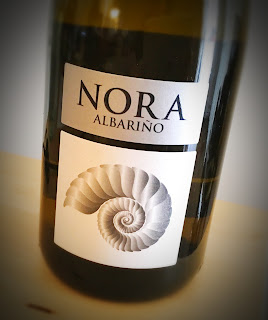One of my favorite wine states is Virginia. There is such a wide spread of varieties being grown there. I’ve sampled Virginia grapes that represent Bordeaux, Burgundy, the Loire, the Rhône, Spain, and Italy. Not to forget, of course, the all-American Norton grape. The good grapes in Virginia are abetted by good winemaking practices, as well.
I was blessed with samples of the winners from the 2025 Governor's Cup event, which started in 1982. A Zoom call featured the makers of the 12 wines which made this year’s Governor's case, the top dozen bottles from the event. Wine writer Frank Morgan heads up the judging for the event, and he hosted the online round-robin with the winemakers. Morgan really kept the program moving and running on time, a hard feat to accomplish in these online events. He also elicited great commentary from the panelists.
The 2023 Potomac Point Albariño earned a gold medal and a place in the Governor's Case of the top 12 Virginia wines, out of more than 620 entries. Owner Skip Causey and winemaker Jordan Cleary were on the Zoom call. Cleary spoke of his blend, which includes a 5% splash of Viognier in the Albariño. Cleary said he did that "for added depth and length" in the wine. The fruit was sourced from Horton Vineyards in Virginia's Monticello AVA.
The wine was fermented in stainless steel, rested on its lees for four months, has alcohol at 13% abv, and costs $35.
This wine is a greenish yellow color, very clear. The nose offers sweet floral notes and a great helping of citrus minerality. The palate shows lemon and lime bathed in a nice salinity. The acidity is quite fresh. It finishes long and savory. Pair this one with roasted chicken, eggplant, or a Caprese sandwich. It will go plenty well with tapas, too.


















